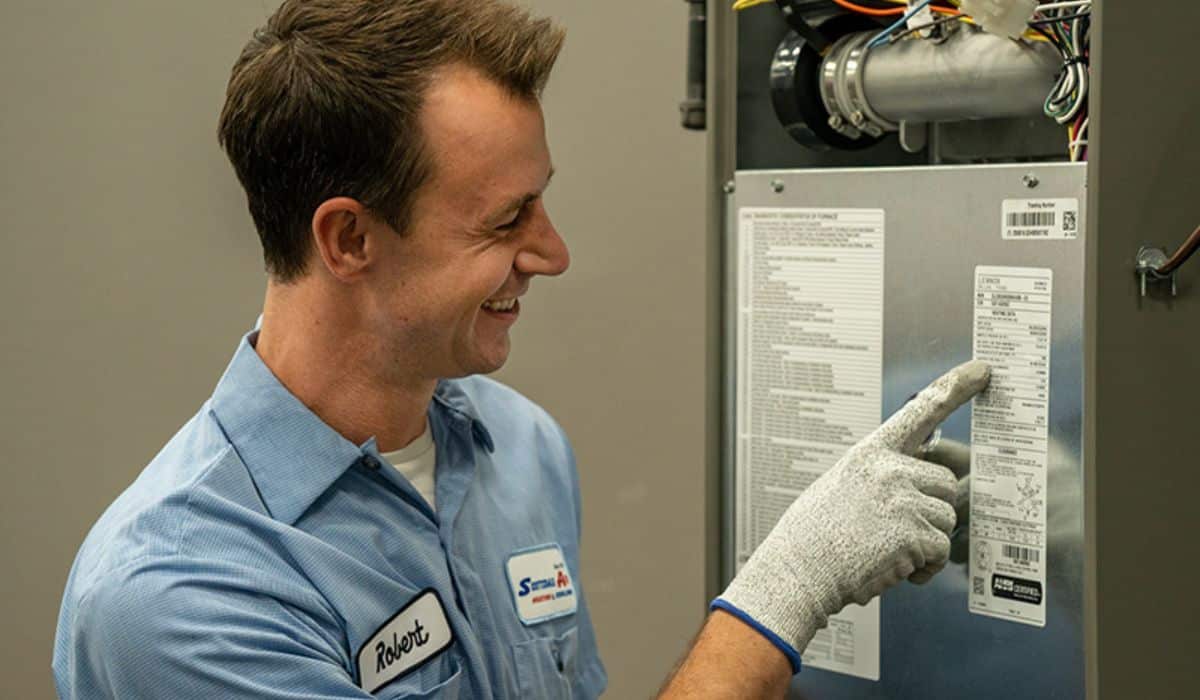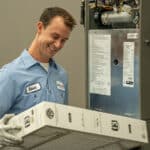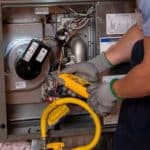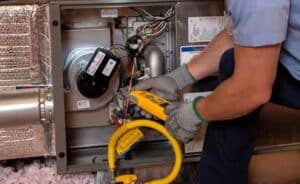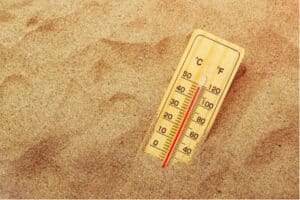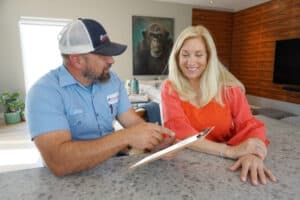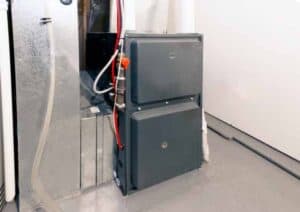75 Years of Valley Wisdom: Why These Repairs Can't Wait
Phoenix homeowners know winter arrives suddenly—one week it’s 85°F, the next morning frost blankets your lawn and temperatures dip into the 30s. If your furnace harbors any of these five critical issues, you’re risking your family’s safety, comfort, and thousands of dollars in emergency repairs.
Since 1947, Scottsdale Air has delivered a genuine, heartfelt, caring experience to Phoenix Valley families. Through three generations of service, we’ve learned that Phoenix’s unique desert climate creates furnace problems you won’t find anywhere else—problems that turn dangerous when ignored.
Our commitment to absolute honesty means we’ll tell you the truth: These five repairs are the difference between a cozy winter evening and a middle-of-the-night emergency that disrupts your holidays, damages your home, and endangers your loved ones.
The Desert Reality: Why Phoenix Furnaces Fail Differently
- Monsoon Moisture Damage: Summer humidity corrodes dormant heating systems
- Dust Storm Infiltration: Haboobs deposit fine particles in critical components
- Extreme Temperature Stress: 118°F summers to 32°F winters shock system materials
- Pest Paradise: Scorpions, rats, and birds nest in idle furnaces
- First Frost Dates: Paradise Valley: November 28 | Phoenix: December 12 | Fountain Hills: November 15
Critical Repair #1: Cracked Heat Exchanger
DANGER: LIFE-THREATENING REPAIR COST: $1,800-$3,500
Why This Can’t Wait:
A cracked heat exchanger silently leaks carbon monoxide into your home. In Phoenix’s well-sealed, energy-efficient homes—especially in Paradise Valley and Arcadia—this invisible, odorless gas accumulates quickly, putting your family at grave risk.
Warning Signs in Valley Homes:
– Soot deposits around furnace registers
– Yellow or dancing flame instead of steady blue
– Excessive condensation on windows during heating
– Rust streaks on furnace cabinet or flue pipe
– Strange chemical or formaldehyde-like odors
The Phoenix Factor:
Our extreme temperature swings—from 160°F attic temperatures in summer to freezing winter nights—cause metal fatigue 40% faster than moderate climates. Combined with monsoon moisture, heat exchangers in Phoenix homes typically fail after 12-15 years versus 20+ years elsewhere.
Our Promise:
For 75 years, we’ve never compromised on safety. If we find a cracked heat exchanger, we’ll show you exactly what we see, explain your options honestly, and never pressure you into unnecessary replacements.
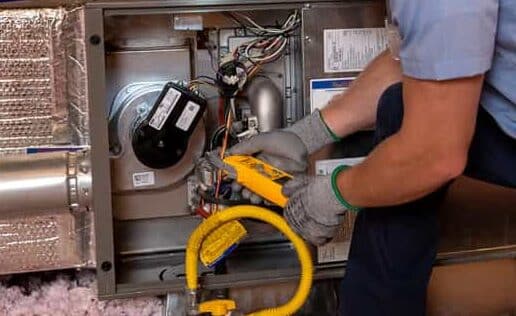
In Maricopa County, Carbon Monoxide poisoning sends 300+ residents to the ER annually.
Critical Repair #2: Failed Ignition System
DANGER: HIGH REPAIR COST: $350-$900
Why This Can’t Wait:
When Phoenix temperatures plummet to the 30s (yes, it happens!), a failed ignition system means no heat, frozen pipes, and emergency hotel stays. For elderly residents or families with young children, this isn’t just inconvenient—it’s dangerous.
Common Ignition Failures in Desert Homes:
Dirty Flame Sensor
Cause: Dust storms & pollution
Result: Furnace cycles on/off
Prevention: Annual cleaning
Cracked Hot Surface Ignitor
Cause: Age & thermal stress
Result: Complete heating failure
Lifespan: 3-5 years in Phoenix
Control Board Failure
Cause: Power surges & heat
Result: Erratic operation
Cost escalation: $400→$1,200
A Customer’s Story:
“During the 2011 freeze, our ignitor failed on Christmas Eve. Scottsdale Air came out immediately—on a holiday!—and had us warm within hours. That’s why three generations of our family trust them.” – The Goldberg Family, Paradise Valley (Customers since 1973)
Service Phoenix Valley since 1947—we understand the importance of home comfort
Critical Repair #3: Blower Motor Failure
DANGER: MODERATE-HIGH REPAIR COST: $450-$1,800
Why This Can’t Wait:
Your blower motor endured 4-5 months of continuous operation during Phoenix’s brutal summer. Now weakened and worn, it’s primed to fail precisely when you need heat most. When it dies, your furnace overheats, triggering shutdowns or worse—fire hazards in your attic.
The Failure Progression:
Month 1: Squealing noises (bearings failing) – $200 repair
Month 2: Reduced airflow, uneven heating – $450 repair
Month 3: Intermittent operation – $900 motor rebuild
Month 4: Complete failure – $1,800 replacement
Result: Overheated furnace, damaged heat exchanger – $4,000+
Phoenix-Specific Challenges:
– Monsoon dust clogs motors despite filters
– Anything over 118°F attic temperatures can degrade lubricants
– Constant summer use accelerates wear
– Low humidity causes premature bearing failure
⚠️ CALL SCOTTSDALE AIR IF YOU NOTICE:
– Burning smell from vents
– Furnace constantly cycling
– No airflow despite operation
– Electrical odor
– Breaker trips repeatedly
Our Response: Same-day service for motor emergencies
Critical Repair #4: Gas Valve Malfunction
DANGER: EXTREME REPAIR COST: $375-$750
Why This Can’t Wait:
A malfunctioning gas valve presents two terrifying scenarios: gas leaking into your home (explosion risk) or valve failure (no heat during freezes). There’s no safe middle ground—this demands immediate professional attention.
Critical Warning Signs:
GAS ODOR:
Evacuate immediately
Call 911 first
No Heat
Valve stuck closed
Immediate repair required
Intermittent Heat
Valve sticking
Failure imminent
Short Cycling
Wastes gas
$100+ monthly excess
The Desert Complication:
Phoenix’s dry air and dust infiltration cause gas valve components to stick or corrode. Monsoon moisture accelerates internal corrosion, while our extreme temperature swings stress valve seals.
Our Integrity Promise: We’ll never perform unnecessary gas valve replacements. If cleaning and adjustment can solve the problem, that’s what we’ll recommend—it’s how we’ve earned trust for 75+ years.
Lifetime Workmanship Warranty on all gas valve replacements
Critical Repair #5: Thermostat and Control Failures
DANGER: MODERATE REPAIR COST: $175-$600
Why This Can’t Wait:
A malfunctioning thermostat in Phoenix doesn’t just waste energy—it can cause your system to run continuously, fail during cold snaps, or worse, not detect dangerous temperature drops that lead to frozen pipes and water damage.
Common Control Issues Before Winter:
Ghost Operations: System runs without being called
– Wastes $150-300 monthly in utilities
– Overheats components, shortening lifespan
– Indicates failing control board ($600+ repair)
Temperature Misreading: Never reaches set point
– House stays cold despite constant operation
– Can indicate wiring deterioration
– Mercury thermostats particularly vulnerable
WiFi Thermostat Failures: Lost connectivity
– Can’t control heating remotely
– Vacation disasters when temperatures drop
– Often requires professional reconfiguration
The Scottsdale Standard:
Upscale homes deserve precise climate control. Outdated thermostats can’t handle Phoenix’s unique demands—40°F temperature swings, monsoon humidity spikes, and extreme heat stress.
Smart Upgrade Benefits:
Modern thermostats offer:
– 20-30% energy savings
– Freeze protection alerts
– Vacation scheduling
– Humidity monitoring
– Integration with home automation
Ask about federal rebates and current specials
The Valley's First Frost Timeline: When Repairs Become Emergencies
Phoenix weather is unpredictable. Here’s when to act:
November 15
Cave Creek/Carefree
First frost risk
Schedule now
November 28
Paradise Valley
Average first frost
Last chance for routine service
December 12
Phoenix/Scottsdale
Typical first frost
Emergency rates begin
December 25
Holiday Freeze
Historic cold snaps
Triple emergency costs
January
Coldest Month
5-7 day wait times
Maximum repair costs
The True Cost of Waiting: Prevention vs. Emergency Repairs
✓ October Prevention
Complete Inspection: $89
Cleaning & Adjustment: $149
Minor Repairs: $200-400
Parts Availability: Same day
Scheduling: At your convenience
Payment Options: Flexible
Peace of Mind: Priceless
Total Investment: $438-638
✗ December Emergency
Emergency Call: $350
Holiday/Weekend: +$200
Expedited Parts: +75% markup
Temporary Heaters: $300
Hotel (if needed): $200/night
Pipe Damage Risk: $10,000+
Family Disruption: Immeasurable
Total Cost: $2,000-15,000+
Why Valley Families Have Trusted Us Since 1947
Three generations of Phoenix families choose Scottsdale Air because we deliver something rare: genuine care combined with unmatched expertise. We treat your home with the respect it deserves and your family with the honesty they deserve.
Genuine Care
Your comfort and safety are our personal mission
75+ Years Experience
Valley expertise since 1947
Lifetime Warranty
Our exclusive workmanship guarantee
Know When to Act: Safety Guidelines
EVACUATE AND CALL 911:
- Natural gas odor (rotten eggs)
- Carbon monoxide detector alarm
- Visible fire or sparks
- Electrical burning with smoke
SHUT OFF SYSTEM AND CALL SCOTTSDALE AIR:
- Persistent burning smell after 30 minutes
- Yellow or orange pilot flame
- Water pooling near furnace
- Repeated circuit breaker trips
Frequently Asked Questions
How can I tell if my heat exchanger is cracked?
Visual signs include soot buildup, rust, water at the furnace base, and a yellow pilot light. However, most dangerous cracks are invisible without professional inspection equipment. If your furnace is over 15 years old, annual inspections are crucial. We use specialized cameras to examine every inch—something impossible with the naked eye.
Why does Phoenix's climate damage furnaces when we barely use heat?
That’s precisely the problem. Your furnace sits idle for 8-9 months while enduring 118°F attic temperatures, monsoon moisture, dust storms, and pest invasions. These dormant months cause more damage than regular use would. Components corrode, seize, and deteriorate without the regular operation that keeps them functional.
What's included in Scottsdale Air's furnace inspection?
Our comprehensive inspection covers all safety components, efficiency testing, and operational verification. We check for carbon monoxide leaks, inspect the heat exchanger, test all safety controls, clean critical components, verify proper combustion, and provide a detailed report with photos. With 75+ years of experience, we know exactly what to look for.
Do you really offer a Lifetime Workmanship Warranty?
Yes, absolutely. Every new installation includes our exclusive Lifetime Workmanship Warranty. This isn’t a gimmick—it’s our commitment to standing behind our work for as long as you own your home. It’s one reason why families have trusted us for generations.
How quickly can you respond to heating emergencies?
During regular hours (Mon-Fri 7:30am-6:30pm, Sat 7:30am-3:30pm), we typically provide same-day service for emergencies. During peak season (December-January), response times extend to 2-3 days for non-emergencies. This is why we strongly recommend October/November maintenance—prevention beats emergency calls every time.
Should I replace my 20-year-old furnace or keep repairing it?
In Phoenix’s harsh climate, a 20-year-old furnace has exceeded its expected lifespan. If facing repairs over $1,000 or multiple issues from our critical list, replacement often makes more financial sense. We’ll provide honest recommendations based on your specific situation—never pushing unnecessary replacements. Our integrity is why customers stay with us for generations.
The Scottsdale Air Difference: Heritage, Trust, Excellence
Three Generations of Trust, One Unwavering Commitment
Since 1947, we’ve built our reputation on a simple principle: treat every customer with genuine care, absolute honesty, and uncompromising professionalism. Today, we’re honored to serve the grandchildren and great-grandchildren of our original customers.
Est. 1947
75+ years of excellence
Family Values
Your home is our priority
Generations Served
Grandparents to grandchildren
Honest Service
Integrity in every interaction

